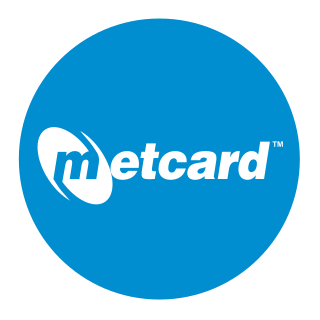
Metcard was the brand name of an integrated ticketing system used to access public transport in Melbourne, Australia. It was a universal ticket which allowed users to ride on the city's Metlink and Metropolitan Transit Authority network, consisting of suburban trains, trams, and buses, including the NightRider network. The Metcard was a credit card-sized ticket made out of cardboard and used a magnetic strip to store fare data. Metcard was operated by OneLink Transit Systems under a contract with the Government of Victoria which was managed by the Transport Ticketing Authority.
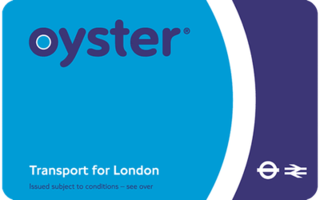
The Oyster card is a payment method for public transport in London in England, United Kingdom. A standard Oyster card is a blue credit-card-sized stored-value contactless smart card. It is promoted by Transport for London (TfL) and can be used on travel modes across London including London Buses, London Underground, the Docklands Light Railway (DLR), London Overground, Tramlink, some river boat services, and most National Rail services within the London fare zones. Since its introduction in June 2003, more than 86 million cards have been used.
SmartRider is the contactless electronic ticketing system of the Public Transport Authority of Western Australia. The system uses RFID smartcard technology to process public transport fares across public bus, train and ferry services.
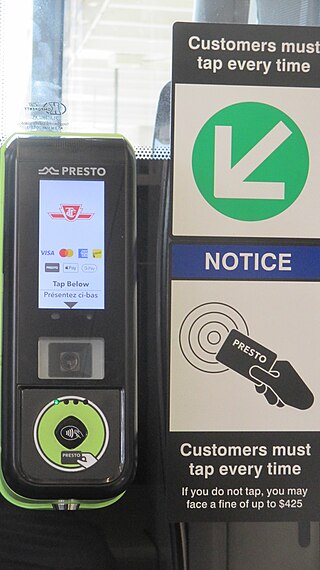
Fares to use the Toronto Transit Commission (TTC) transit system in Toronto, Ontario, Canada, can be paid with various media. The price of fares varies according to age, occupation, income level, and health condition of riders.

The Presto card is a contactless smart card automated fare collection system used on participating public transit systems in the province of Ontario, Canada, specifically in Greater Toronto, Hamilton, and Ottawa. Presto card readers were implemented on a trial basis from 25 June 2007 to 30 September 2008. Full implementation began in November 2009 and it was rolled out across rapid transit stations, railway stations, bus stops and terminals, and transit vehicles on eleven different transit systems.
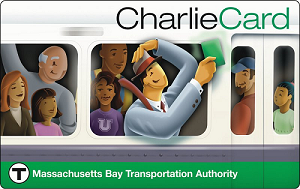
The CharlieCard is a contactless smart card used for fare payment for transportation in the Boston area. It is the primary payment method for the Massachusetts Bay Transportation Authority (MBTA) and several regional public transport systems in the U.S. state of Massachusetts.
The London Underground and Docklands Light Railway (DLR) metro systems of London, England uses a mix of paper and electronic smart-card ticketing.

The Breeze Card is a stored value smart card that passengers use as part of an automated fare collection system which the Metropolitan Atlanta Rapid Transit Authority (MARTA) introduced to the general public in early October 2006. The card automatically debits the cost of the passenger’s ride when placed on or near the Breeze Target at the fare gate. Transit riders are able to add value or time-based passes to the card at Breeze Vending Machines (BVM) located at all MARTA stations. The major phases of MARTA's Breeze transformation took place before July 1, 2007 when customers were still able to purchase TransCards from ridestores or their employers. They were also able to obtain paper transfers from bus drivers to access the train. As of July 1, 2007 the TransCard and the paper transfers were discontinued and patrons now use a Breeze Card or ticket to access the system, and all transfers are loaded on the card. Breeze Vending Machines (BVM) distribute regional transit provider passes The Breeze Card employs passive RFID technology currently in use in many transit systems around the world.

Myki, stylised as myki, is a reloadable credit card-sized contactless smart card ticketing system used for electronic payment of fares on most public transport services in Melbourne and regional Victoria, Australia. Myki replaced the Metcard ticketing system and became fully operational at the end of 2012.

The OV-chipkaart is a contactless smart card system used for all public transport in the Netherlands. First introduced in the Rotterdam Metro in April 2005, it has subsequently been rolled out to other areas and travel modes. It fully replaced the national strippenkaart system for buses, trams, and metro trains in 2011, and the paper ticket system for rail travel in July 2014.

A transit pass or travel card, often referred to as a bus pass or train pass etc., is a ticket that allows a passenger of the service to take either a certain number of pre-purchased trips or unlimited trips within a fixed period of time.
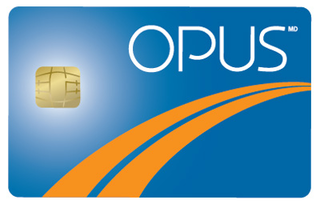
OPUS is a rechargeable, dual interface (contact/contactless) stored-value smart card using the Calypso Standard and is used by major public transit operators in Greater Montreal and Quebec City, Quebec, Canada. It complies with the ISO/IEC 14443 standard for smartcards and can be read by smartphones with an NFC antenna.
The go card is an electronic smartcard ticketing system developed by Cubic Corporation, which is currently used on the Translink public transport network in South East Queensland, Australia. To use the go card, users hold the card less than 10 cm away from the reader to "touch on" before starting a journey, and must do the same to "touch off" the service at the end of the journey. The cost of each journey is deducted from the go card balance.

The Easy Card system is a series of linked contactless smartcard systems used by Miami-Dade Transit and South Florida Regional Transportation Authority in the South Florida area. The Easy Card allows for electronic payment on multiple public transport systems including Miami Metrorail, rapid transit rail system; Tri-Rail, commuter rail system; and Metrobus. Other public transportation agencies in the South Florida area which may eventually join the system include Broward County Transit as well as Palm Tran.

The NolCard is an electronic ticketing card developed by Hong Kong-based company Octopus Cards Limited that was released for all modes of public transport services in Dubai in August 2009.
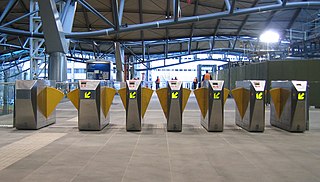
An automated fare collection (AFC) system is the collection of components that automate the ticketing system of a public transportation network – an automated version of manual fare collection. An AFC system is usually the basis for integrated ticketing.
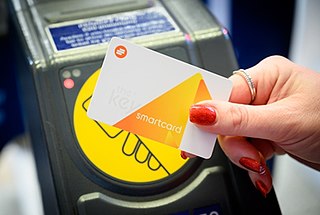
The Key is a contactless ITSO-compatible smartcard developed by the Go-Ahead Group used on buses, trains and other forms of public transport across various areas of the United Kingdom.

MetroCARD is a contactless smartcard ticketing system for public transport services in the Adelaide city and suburbs in South Australia. The system is managed by Adelaide Metro and is usable on their bus, train and tram services.
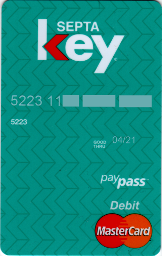
The SEPTA Key card is a smart card that is used for automated fare collection on the SEPTA public transportation network in the Philadelphia metropolitan area. It can be used throughout SEPTA's transit system, and on Regional Rail.


























